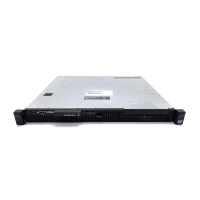Installing the Software 27
Create a VLAN
The Default VLAN is part of the system startup configuration, and is by default,
VLAN 1. You may make another VLAN the Default VLAN. The Default
VLAN cannot be deleted, disabled, or configured (you cannot assign it an IP
address), and only untagged interfaces can belong to it.
When an interface is configured, a switchport automatically places it in the
default VLAN as an untagged interface. All switchports must belong to at least
one VLAN, so to remove a switchport from the Default VLAN, you must place
it as tagged or untagged in some other VLAN, or remove the switchport
configuration.
Assign Interfaces to a VLAN
A port may either be an untagged member of a single VLAN, or a tagged
member of perhaps multiple VLANs.
• Untagged Ports — ports that do not append an 802.1Q VLAN tag to frames
on egress, and do not accept tagged frames on ingress (tagged frames are
dropped). Untagged ports must be connected to VLAN-unaware devices.
• Tagged Ports — ports that append an 802.1Q tag to frames on egress, and
accept only tagged frames on ingress (untagged frames are dropped). Tagged
ports must be connected to VLAN-aware devices.
When you configure an enabled port as a switchport, the port is placed in the
default VLAN. To remove a switchport from the default VLAN, remove the
switchport configuration. To move the port to another VLAN, add it to the
desired VLAN as either a tagged or untagged member.
To view just the interfaces that are in Layer 2 mode, enter the show interfaces
switchport command in the EXEC mode.
Task Command Syntax Command Mode
Create a VLAN interface vlan vlan-id CONFIGURATION
Display all VLANs. show vlan vlan-id EXEC Privilege

